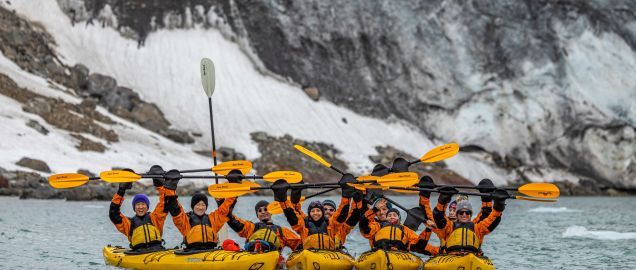The Antarctica Explorer
Next DepartureFeb. 19, 2025See all departures |
Duration13 daysSee the itinerary |
Activities
, Kayaking, Lectures, Photography, Zodiac |
Join our 13-day Antarctica Explorer voyage, our lengthiest Antarctica-only cruise, where we will discover the stunning scenery, glacier-clad peaks, and extraordinary wildlife of the Great White Continent. This expeditionary escapade promises to be one-of-a-kind, as we will have no predetermined schedule - a genuine exploratory expedition, experiencing Antarctica as it was meant to be!
Prepare for the ultimate Antarctic adventure on board Ocean Albatros, one of the world's most technologically advanced expedition vessels! After navigating the serene Beagle Channel, the real adventure begins as we enter the infamous Drake Passage, where the frigid Antarctic meets the warmer waters of the Atlantic and Pacific Oceans. Brace yourself for a challenging yet exhilarating journey as we cross this infamous body of water, but fear not! Our purpose-built vessel is equipped with stabilizers, powerful engines, and the patented reclining X-Bow, which provides comfort and stability in rough seas while boasting very low fuel consumption. The most spirited sailors consider crossing the Drake Passage a lifetime achievement - and you will complete the crossing twice! And as we sail through these nutrient-rich waters, get ready to marvel at the abundance of seabirds, albatrosses, and whales we may pass.
As we weave through the South Shetland Islands, a glittering chain of ice-covered islands and dormant volcanoes, keep your eyes peeled for whales, sea lions, elephant seals, and an incredible amount of seabirds and penguins. Our expedition will include numerous Zodiac excursions and landings, allowing us to explore these magnificent lands up close.
But that's just the beginning! We'll continue onward to the awe-inspiring beauty and peaceful silence of the Antarctic Peninsula itself. This voyage has no set itinerary beyond the aim to reach the Circle - however, we always aim to visit locations which showcase the best of Antarctica; wildlife sightings and weather conditions will decide the exact sites we visit as we move with the rhythms of nature; perhaps a well known penguin colony will draw us west, and whale and seal sightings will draw us back again! Wherever the whims of Mother Nature take us, jaw-dropping scenery and landscapes are guaranteed! We could journey to the mighty tabular icebergs of the Weddell Sea, explore the seldom-visited lands south of the Antarctic Circle, or even visit manned research stations in the most isolated places on Earth. One thing's for sure – we'll encounter fantastic wildlife and embark on a real adventure.
With an extra two days to explore compared to our Classic Antarctic voyages, you will have even more time to experience the majesty of the White Continent. Dense pack ice forbids many ordinary vessels from reach too far south, but with a PC6/1A ice rating, Ocean Albatros can access areas off-limits for most ships to explore deeper and experience more of Earth's last frontier. With an average occupancy of 175 guests aboard Ocean Albatros, our cruises offer a unique experience for the brave few.
Don't miss out on this once in a lifetime opportunity!
Facts about The Antarctica Explorer
- Antarctica


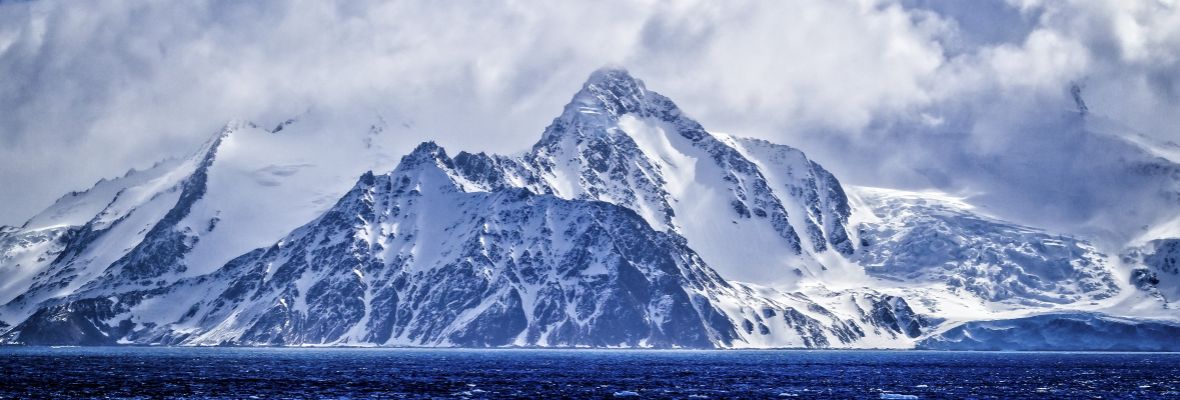

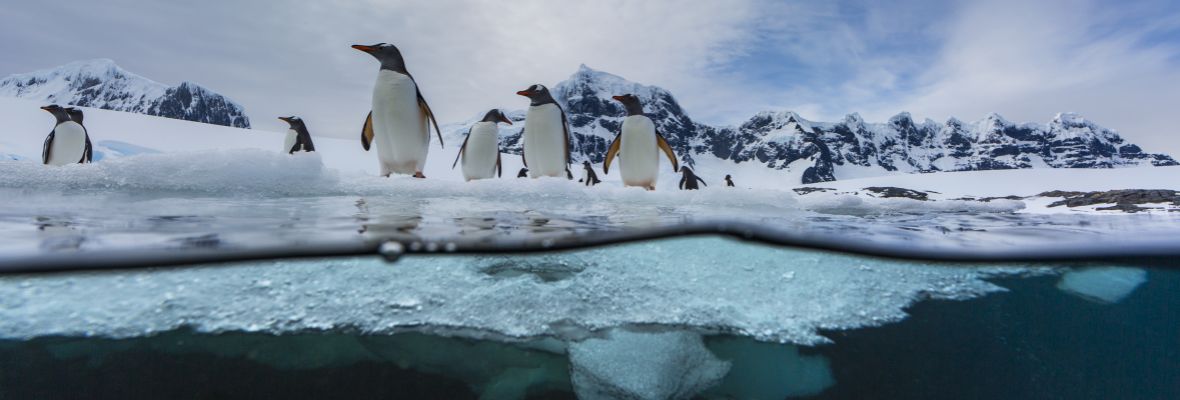


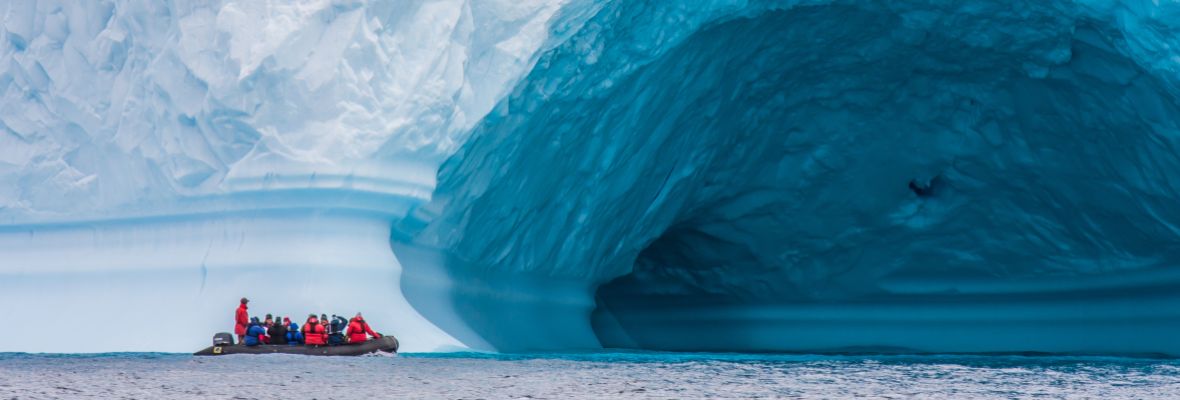

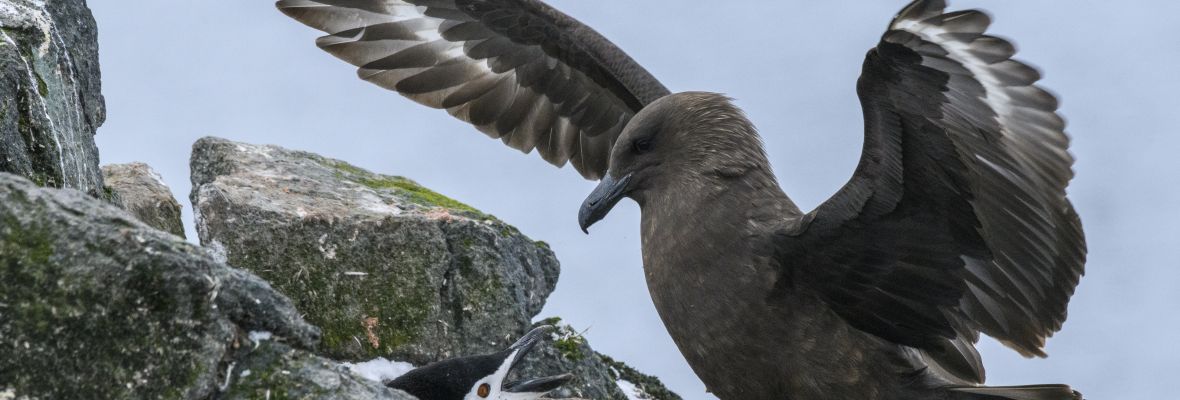

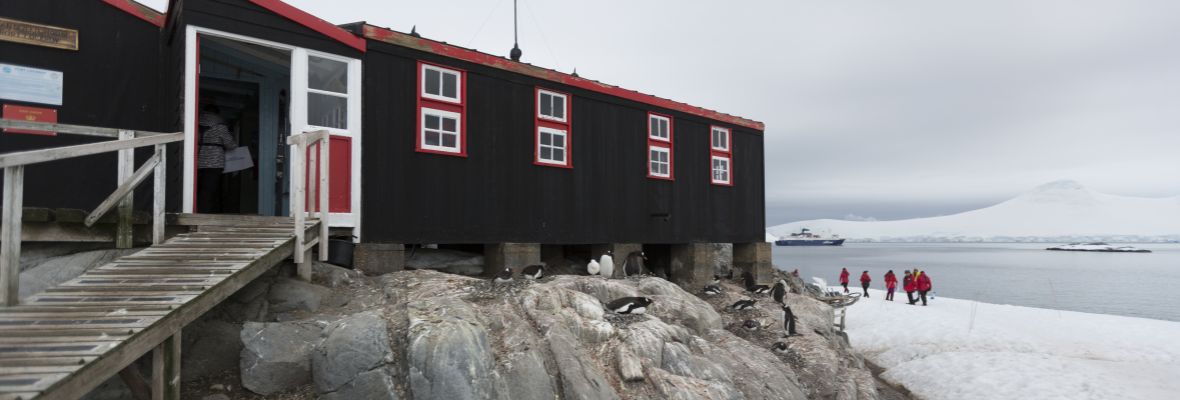

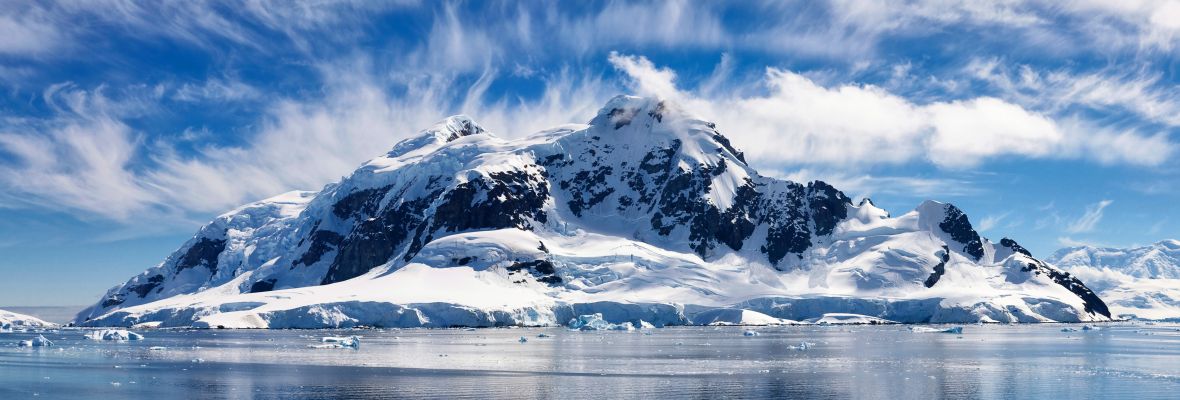

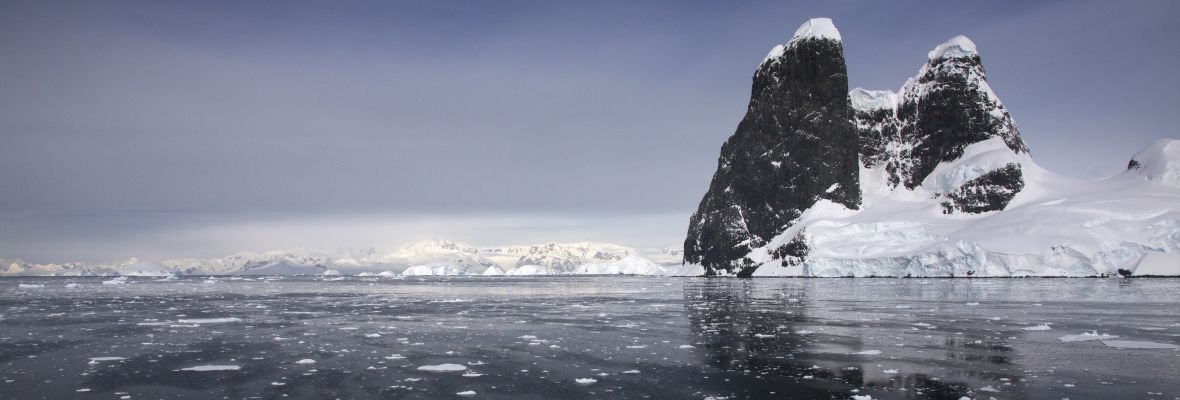
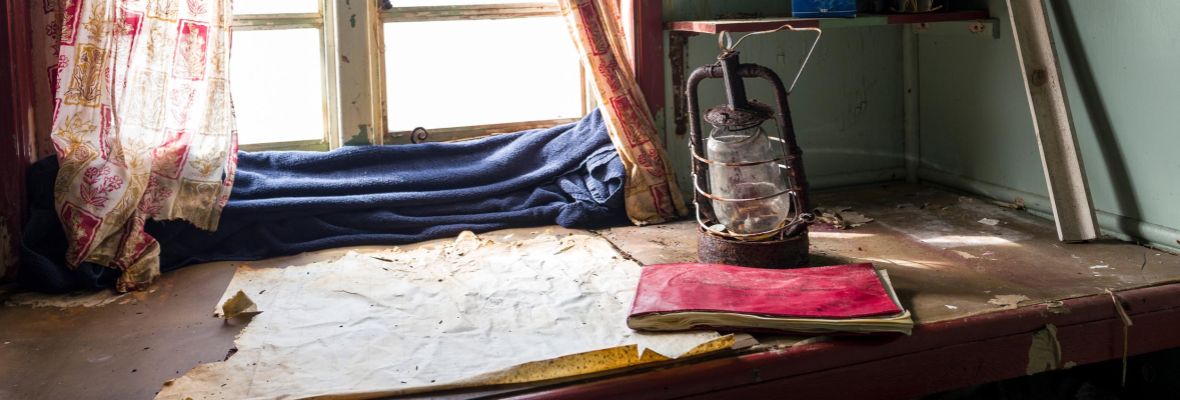

DAY 1
ARRIVAL USHUAIA, EMBARKATION
Arrive in Ushuaia, Argentina - the world’s southernmost city. Explore this vibrant Patagonian city, or stretch your legs in the surrounding forests. Alternatively, consider a day trip off the beaten path into the raw nature of Tierra del Fuego. The island of Tierra del Fuego is a hiker's paradise with rugged snow-capped mountains, glaciers, flower-filled meadows and rich boggy wetlands. In the afternoon, we board our vessel, waiting to welcome us in port.
After our mandatory safety drill, our expedition begins as we navigate through the calm waters of the famous Beagle Channel (named for Charles Darwin's ship). This steep-sided strait divides southern Tierra del Fuego between Chile and Argentina, and has been the jumping-off point for thousands of expeditions into the unknown. Watch out for whales and dolphins as we sail off the edge of the map into the tempestuous Drake Passage.
DAY 2-3
AT SEA - CROSSING THE DRAKE PASSAGE SOUTHBOUND
Sailing onward, we cross the famed Drake Passage - the body of water separating Patagonia and the Antarctic Peninsula. The Drake Passage is known for rollicking conditions and strong westerly winds, nicknamed the Roaring Fifties. While this passage may be challenging, you can rest comfortably aboard our expedition vessels, which are purpose-built with stabilizers, powerful engines and manned by a highly-qualified crew. The most spirited sailors consider Drake Passage a lifetime achievement - and you will complete the crossing twice!
Our days in the Drake Passage will be put to good use preparing for our arrival in Antarctica - your Expedition Leader will brief you comprehensively on how to stay safe and minimise your impact on this precious wilderness, as well as briefing you thoroughly on our plans for our time spent exploring, including hints and tips for wildlife watching. Our dedicated Expedition Team will assist you to biosecure your clothing and equipment (a vital process to protect Antarctica's delicate ecology), as well as sharing tailored lectures on Antarctic exploration history, wildlife, geology, glaciology and more!
We will cross into the Antarctic Convergence on the third day of our voyage - watch the mercury plummet as we sail southwards into Antarctic waters, an abrupt cooling that marks the intersection of Antarctic waters with the warmer waters of the Atlantic and Pacific Oceans. As the sea cools, wildlife multiplies; these are some of the most biologically productive water on Earth, so expect to see petrels, albatrosses and potentially penguins, seals and whales in abundance. Weather permitting, we may be able to make landfall in the South Shetland Islands (a small but spectacular archipelago to the north of the Antarctic Peninsula) on the afternoon of our second day in the Drake Passage, marking the start of our exploration on the Last Continent.
DAY 4-10
THE ANTARCTIC PENINSULA - ADVENTURE AWAITS
With no set itinerary in Antarctica, this voyage offers adventurous travellers the chance to experience Antarctica as it was meant to be - flowing with the wind, sea and ice, and taking the best opportunities Mother Nature provides. This voyage departs in the first half of the brief Antarctic summer, when sea ice is at its maximum - this offers us ample opportunities to explore in the icy wilderness of the last continent. Our exact route will be subject to careful planning by the Expedition Leader and Captain - however we will aim to visit a range of sites which showcase the best of this staggeringly beautiful region.
Marvel at the massive icebergs and vast glaciers on a Zodiac cruise in Paradise Bay. Be moved by penguins tenderly caring for their precious eggs, and fiercely defending their nests on Cuverville Island. Watch cataracts of ice tumble into clear blue ocean on a hike over the active glaciers of Neko Harbour. Experience the Antarctica of old at historic huts such as Damoy Point, lovingly restored and open to all. Feel the spray of water from the blow of a humpback whale on a Zodiac safari in Wilhelmina Bay. Wonder at awe-inspiring scenery on a ship cruise through the Lemaire Channel. Watch city-sized tabular icebergs drift silently past the ship in the Antarctic Sound. Wherever we go on the Antarctic Peninsula, endemic wildlife, tantalising history and breathtaking natural beauty abound.
This time of year, expect to see penguins carefully tending their fluffy chicks, while their partners frantically hunt for food at sea. As the snow melts, opportunities for hiking onshore increase. Antarctic fur seals start to arrive in their summer feeding grounds, and humpback whale numbers increase as more of these gentle giants arrive at the end of their long migration. With luck, we may even see the young of these gentle giants. Perhaps the ice will retreat far enough to allow us access to the unknown islands south of the Antarctic circle - where the midnight sun never sets.
There is no set itinerary on this trip, which allows our staff onboard to maximize the experience for all onboard. Whilst our suggestions above are just possible routes and landings, we can be sure that this will be the ultimate Antarctic experience.
DAY 11-12
At sea - Crossing the Drake Passage northbound
We eventually depart Antarctica, and spend two days at sea on our way northwards back across the infamous Drake Passage towards the more welcoming shores of the Beagle Channel and Ushuaia, Argentina. During our time at sea, a variety of activities will be arranged on board to provide our guests with the chance to reflect on their voyage. Relax with an expertly crafted cocktail in the Nordic Bar in the company of new friends, soak up the knowledge and passion of our Expedition Team during lectures in the Shackleton Lounge, or simply enjoy the flight of the albatross which accompany us northwards.
During your last evening onboard, join the Captain and Officers for the Farewell Cocktail Party, followed by a presentation of photos and video by our onboard photographer - the ideal opportunity to re-live your Antarctic adventure. Skål!
DAY 13
Return to USHUAIA AND DISEMBARKATION
On the morning of the final day of our voyage, we will arrive back at the pier of Ushuaia, Argentina. Trees, grass and a busy city may seem strange to you after the white wilderness of Antarctica! After a hearty breakfast, it is time to bid a fond farewell to the Crew and Albatros Expedition Team, and descend the gangway back to dry land with memories of the voyage of a lifetime.
Inclusions
• 13-day/12-night cruise with accommodation in a shared outside double stateroom with private facilities
• Ushuaia shuttle transfers to ship from city centre (embarkation) / from the ship to city centre or airport (disembarkation, morning)
• All Zodiac landings and excursions as per itinerary
• Expedition parka
• Rubber boots in assorted sizes, suitable for shore landings (loan)
• Guiding and lectures by our expedition leader and team
• Special Photo Workshop
• English-speaking expedition team
• Visual Journal link after voyage including voyage log, gallery, maps, species list and more!
• Full board on the ship - breakfast, lunch, dinner and afternoon snacks
• Complimentary house wine, beer and soda at dinner (selected labels and brands, served at our a-la-carte dinners)
• Free tea and coffee 24 hours’ daily
• Welcome and farewell cocktails
• Port fees, IAATO fees, taxes and tariffs
Exclusions
• Flights
• Travel and Cancellation insurance
• Extra excursions and activities not mentioned in the itinerary
• Single room supplement and stateroom upgrades
• Meals not on board the ship
• Beverages (other than mentioned under "included")
• Tips for the crew (approx. USD 16 per person per day)
• Personal expenses
• Anything not mentioned under ’Inclusions’
After crossing the Drake Passage, you'll be exploring Antarctica. The goal for the days around the South Shetland islands and Antarctic peninsula is to offer activities which will allow everyone to explore off the ship as much as possible (weather permitting). Weather dependent, we will try to offer two activities per day, usually either a landing or a Zodiac cruise.
Typically, there will be a morning activity after breakfast and an afternoon activity after lunch. We always try our hardest to meet this expectation, but because weather in Antarctica can be extremely unpredictable, we ask everyone to be mindful of our remote location and thank everyone in advance for their flexibility. Activities we offer include landings, Zodiac cruises and ship cruises. Regulations in Antarctica limit the number of people ashore at any time, so we will usually aim to offer a Zodiac cruise while our first group of guests are ashore, and reverse this for the second group ashore to maximise exploration time. No matter the day’s planned activities, the onboard Expedition Team and Expedition Leader will work as hard as possible in conjunction with the Captain and Crew to maximize exploration opportunities.
A “typical” expedition day may look like this (subject to weather and sea conditions and sailing schedule):
- 06.45: Wake-up call
- 07.00-08.00: Breakfast
- 08.30-11.30: Morning activity - landing and/or Zodiac cruise
- 12.30-13.30: Lunch during vessel repositioning
- 14.30-17.30: Afternoon Activity - landing and/or Zodiac cruise
- 18.30-19.30: Evening Recap and Briefing with the Expedition Team
- 19.30: Dinner
- 21.00: Evening entertainment or presentations with the Expedition Team.
Landings are a great opportunity to stretch your legs and set foot on Antarctica to visit the dense penguin colonies, vast snowfields, and dramatic landscapes of the last continent. Our experienced Expedition and Deck Teams will assist guests to board and disembark the Zodiacs, the only means by which we can access these remote and rugged shores. Our friendly team will always be on shore to help you spot and identify the different species of penguins and other wildlife, guide hikes and other excursions, interpret what you are seeing, as well as keep our guests safe on shore from any potential hazards. Different landing sites exhibit a variety of Antarctic experiences - these could include penguin or other wildlife colonies, historical sites, active research stations, or simply locations of exceptional natural beauty. Our knowledgeable Expedition Leader will always try to ensure landing sites are selected with variety of experiences in mind to exhibit the best of the White Continent.
In the event we encounter bad weather or are in a particularly spectacular location, often our purpose-built expedition vessels are the best viewing platform. The Captain and Expedition Leader will search for locations best accessed with the vessel, seeking out the best wildlife and scenery. We encourage everyone to bundle up and either head onto the outer decks with the Expedition Team or relax in superlative comfort in our specially-designed lounges to experience the majesty of Antarctica from the best vantage point. The unique sloping X-Bow design of our vessels offers unimpeded views from almost all vantage points, as well as hydraulic viewing platforms on Deck 5 for intimate al fresco viewing close to the water. During ship cruises, our Expedition Team specialists will be on hand to answer questions, point out widlife and other sights, and offer hints and tips on photography.
Voyages from October to December typically offer camping options to spend the night on Antarctica, whilst most voyages throughout the season also offer kayaking (both may be booked and paid onboard – weather permitting). Snowshoeing will also typically be available at selected sites during the first half of the Antarctic season, when the Peninsula is mantled in snow (additional fee applies). Other activities onboard include our Albatros Polar Gym, where you can burn some calories on our fitness bicycles or treadmills; most of our ships even have other cardio machines and strength/lifting options - and no gym on Earth has a better view! Our new purpose-built ships include the Albatros Polar Spa, in which guests can enjoy massages, facials, and other relaxing treatments (additional cost applies). The Knud Rasmussen Library is a great place to unwind between outings, with expansive views and a wide selection of Antarctic-related reading material. During your voyage you will also be able to enjoy our Afternoon Tea in the Nordic Lounge, or indulge in some retail therapy in our Albatros Ocean Boutique, which sells personal necessities as well as specially-selected Antarctic souvenirs. To deepen out guests understanding of the region, throughout the voyage our expert Expedition Team will offer skillfully-crafted lectures related to Antarctic wildlife, history, conservation and more!
In between our landings and activities we offer three hearty daily main meals. Albatros Expeditions always have allergy flexible options, healthy selections as well as a variety of vegetarian and vegan options.
Our hardworking galley crew deliver multiple Breakfast options, served in a buffet style a cooking station where eggs are made to order. At Lunch we are also met with a smorgasbord of mouthwatering choices. Safe to say you will have the energy for your next outing!
When it is Dinner time, you can choose to eat at the main Beagle Restaurant or book a table at the Antarctic Panorama Specialty Restaurant. Your evening meal is served a la carte, with fresh new options daily and always a selection of fixed items. There is always a vegetarian and pescetarian option available. Albatros Expeditions are known for our delicious menus and a variety of exquisite wine pairings.
Onboard you will also have the option to join Afternoon Tea with sweets, cakes or snacks served each afternoon. Albatros Expeditions have tea and coffee freely available all day throughout the vessel, while specialty coffee, alcoholic beverages and hand-crafted cocktails are available at the ship’s bars.
During October to November visitors to Antarctica can expect to see penguins coming ashore for their annual nesting season. This is the time when these birds build nests, court mates and tend their precious eggs, offering a fascinating glimpse into the lives of these charismatic birds. While still a little early for penguin chicks to have hatched, November offers the potential to see the very first hatchlings. Pristine snowy landscapes, large icebergs and lack of late-season vessel congestion can be experienced in the beginning of the season, offering a radically different experience to the high season. Unbelievable glacial ice formations and huge ice bergs stud the ocean as the last sunsets of the season occur, a majestic spectacle eventually giving way to the Antarctic midnight sun.
In December temperatures approach their warmest, daylight is longer and wildlife is even more active. The continent glows under the midnight sun and the penguin rookeries reach peak activity as the hatching starts in earnest. Whale sightings begin to be more commonplace as migrating whales arrive to feed. Midnight sun with close to 24-hour daylight occurs in this period, lighting up the patches of snow that are still left at sea level. The sea ice is also retreating, potentially allowing access to landing sites further South.
By January/February, we enter what we call ‘peak season’ with long daylight hours and flocks of fluffy penguin chicks. There is more activity in the colonies as parents head off to hunt for food for their ever-hungry young. Towards the latter part of this period, the chicks get more curious and mobile, often hanging around in ‘creche’ groups as their parents head out to sea. The added penguin activity also means that some of our landing sites become muddy and slushy in the height of the Antarctic Summer. Sea ice starts to break up in earnest, which allows vessels to venture further south, enjoying improved opportunities for whale and seal watching. Longer sunsets and shorter evenings return towards the end of February as the brief Antarctic Summer gives way to Autumn.
As we enter March/April the season starts to wind down. Whilst the whales are at their highest number, ferociously feeding to get ready for their long northward migrations, the penguin colonies start to thin out as the adorable chicks shed their bay feathers to begin adult life out in the fury of the Southern Ocean. This attracts leopard seals, which are often seen actively hunting in the clear waters just offshore. Spectacular sunsets and less snow make this a great time for photo opportunities and longer walks onshore. During this time of year the weather begins to get colder and there is an increased risk of storms, but the wild rugged beauty of Antarctica approaching Winter is unparalleled throughout the year.
Whilst Antarctic weather is consistently chilly, the summer months can be surprisingly mild, and generally have temperatures ranging from -2°C (28°F) to 6°C (46°F). The extended daylight during the summer warms up more sheltered areas and on calm windless days, a t-shirt can even be of more use than a parka! However, Antarctic weather is highly changeable and can harbor storms, snow fall, rain or fog, which can occur at a moment’s notice at any time of year. Bigger storms are rare but can lead to further rapid drops in temperature, and glacially-generated katabatic winds can blow out of nowhere. In other words, we would remind our guests that it is crucial to be ready for any weather conditions! Waterproof layers are an essential for any venture off the ship, and we advise guests to dress in several warm layers (including hats, gloves, scarfs etc.) to adjust as the weather dictates - woolen, down or synthetic fibres are prefereable to cotton or other materials. We also highly advise guests to consider sun protection - the lack of ozone over Antarctica means direct and reflected sunlight can burn skin very quickly; sunglasses are essential! Albatros Expeditions provide sturdy landing-appropirate waterproof insulated rubber boots for all guests, as well as an expedition parka for Antarctic voyages.
Albatros Expeditions strives to employ the very best Expedition Team in the whole industry, with a variety of experts form fields such as geology, ornithology, history, anthropology and more. We travel in some of the planet’s most remote regions, where planning and on-location experience is key. Our routes and itineraries are subject to the prevailing sea, ice and wind conditions, which are closely monitored by the Bridge Team and Expedition Leader. Drawing on their vast experience, they find the best alternatives in the rare instances where our planned itinerary needs to be changed. Each cruise is therefore a completely unique combination of locations, where the highlights can often be the totally unexpected. Most of our cruises provide the opportunity to spot a variety of unique wildlife, although this is of course subject to the whims of Mother Nature and cannot be guaranteed. As you will no doubt experience, the joy from our Expedition Team when spotting different species on land or at sea is as genuine as your own.
This means that you as our guest are part of an adventure, a true expedition, where plans change, wildlife is encountered on their terms and your team consists of the very best experts within their fields. We strive to maintain a mix of specialists within relevant polar subjects including marine biology, ornithology, earth science, history and others. Albatros Expeditions boast a large number of Expedition Staff onboard, allowing us to maintain a high quota of staff-to-guests at 1:8, amongst the highest ratios in expedition cruising. Some of our staff have decades of experience on ships or research stations, whilst others may be performing their first season. One thing they all have in common is the wish to make each and every journey something completely special and memorable for our guests. Knowledge, skill and passion are the trademarks of all Albatros Expeditions' Staff.
To ensure the safety and quality of our guests' experience, please keep in mind that the itinerary and outdoor activities during each voyage are solely dependent on weather and sea conditions. Your safety is our highest priority. The route and shore landings will be determined by the Captain and Expedition Leader and communicated to guests through regularly scheduled briefings. Albatros Expeditions reserves the right to modify the landings and locations visited during a voyage based on local weather, sea and ice conditions to ensure a safe and enjoyable experience for all our guests. Our voyages are expeditionary in nature, and thus changes to timings are commonplace due to the environment we operate in, as well as wildlife opportunities and locations.





